In 1913, Vogue magazine featured its first patterns for bathing costumes. These do-it-yourself patterns were intended to fill the “distinct need for smart bathing costumes,” an indication that swimming had become a widespread and fashionable activity.1 Swimwear editorials began to appear regularly in Vogue and swimwear itself became more varied. With the appearance of elasticized fabrics in 1917, the modest nineteenth century bathing costume began to disappear and was slowly replaced by progressively lighter and more form-fitting swimwear. By the end of World War I in 1919, increased social freedom for women made it widely acceptable to wear more revealing swimwear in public.
During the 1920s, swimwear became an important component of a fashionable wardrobe. Designers such as Schiaparelli and Patou created swimwear demonstrating the most current design trends. These slim, form-fitting, one-piece swimsuits often featured stark geometric patterning and resembled men’s swimwear. Overall, they were in tune with the boyish silhouette popular for women throughout the 1920s. These bathing suits did not stand alone; they were accompanied by a plethora of accessories, including hats, beach carryalls, and appropriate footwear. Beach pajamas were a popular cover-up and also functioned as casual resort wear.
In the 1930s, California became a center of swimwear design and production. Catalina, which was originally a sweater and underwear manufacturer, quickly became the most prominent name in American swimwear. Catalina capitalized on its proximity to Hollywood and recruited stars such as Marilyn Monroe and Ronald Reagan for their ad campaigns. Catalina also used beauty pageants to promote their product, supplying swimwear for the “Swimsuit” portion of the Miss America Pageant until 1950.
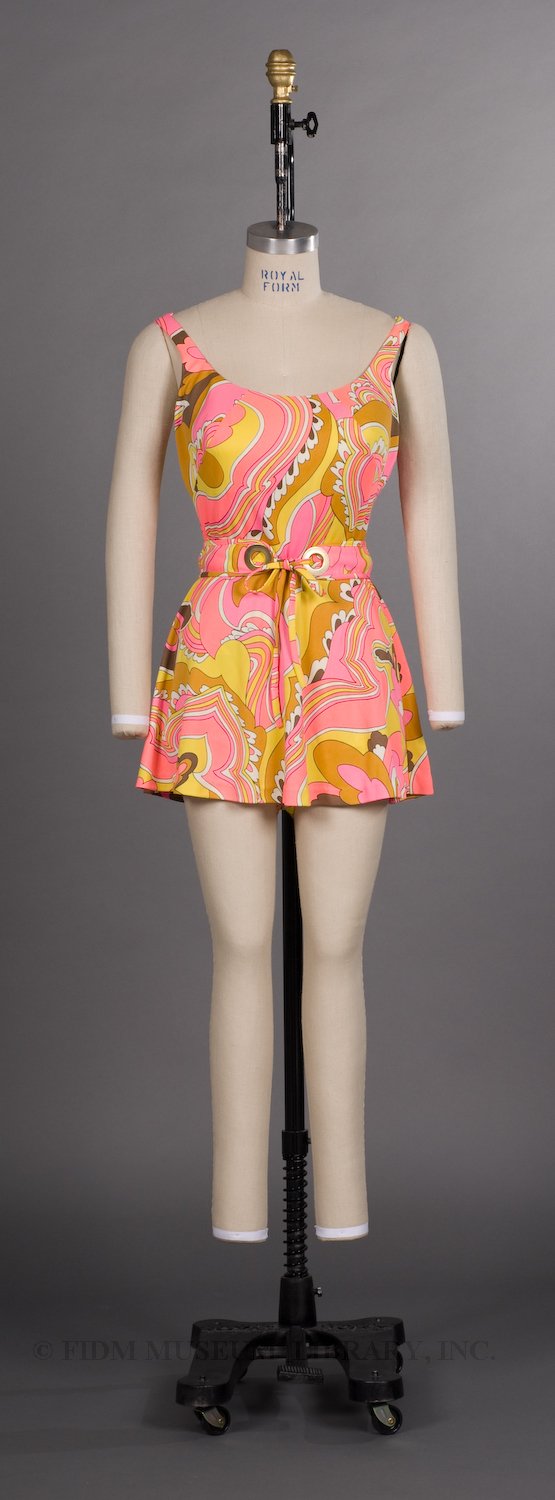
Bathing suit
Catalina Inc.
c. 1965-66
Gift of Louise Coffey-Webb
2001.20.1
Side view of 2001.20.1
Back view of 2001.20.1
This mid-sixties example of a Catalina swimsuit demonstrates the close alignment of streetwear and swimwear which occurred in the twentieth century. The colorful, mildly psychedelic pattern is typical of 1960s dress, which featured a wide variety of patterns. Metallic accents were also popular in the 1960s, a demonstration of the popularity of new, man-made materials in clothing. Though it features some shaping in the bust, the overall silhouette is fairly natural and would reflect the body underneath the suit. 1960s streetwear reflects this same trend away from the corseted silhouette so widespread during the 1950s. The tiny skirt is a nod to modesty but also demonstrates how far the nineteenth century bathing costume had evolved.
Despite the availability of extremely revealing swimwear, it is still possible to find swimsuits which make direct reference to the history of swimwear. The Moschino suit below, though thoroughly twentieth century, makes direct reference to nineteenth century swimwear. Its black and red coloring is an updated version of the nautical styling popular so common in early bathing costumes. Though lacking a concealing skirt, the double ruffle at the hip references the modest skirts of nineteenth century bathing costumes. Can you imagine how it would be received at a nineteenth century seaside resort??
 Bathing suit
Bathing suit
Moschino
2006
Museum Purchase
2006.5.15
A recent article in the Los Angeles Times demonstrates that swimwear can still be controversial. To read about the controversy surrounding the burkini, a recent innovation in swimwear, click here.
1 Probert, Christina. Swimwear in Vogue Since 1910.New York: Abbeville Press.pg. 8.
“Catalina.” In An Influential Fashion: An Encyclopedia of Nineteenth- and Twentieth-Century Fashion Designers and Retailers Who Transformed Dress. Westport, CT: Greenwood Press, 2002. 3 pp. Gale Virtual Reference Library. Gale. Fashion Inst of Design & Merchandising. 26 Aug. 2009.
Ward, Susan. “Swimwear.” Encyclopedia of Clothing and Fashion. Ed. Valerie Steele. Vol. 3. Detroit: Charles Scribner’s Sons, 2005. 6 pp. 3 vols. Gale Virtual Reference Library. Gale. Fashion Inst of Design & Merchandising. 26 Aug. 2009.

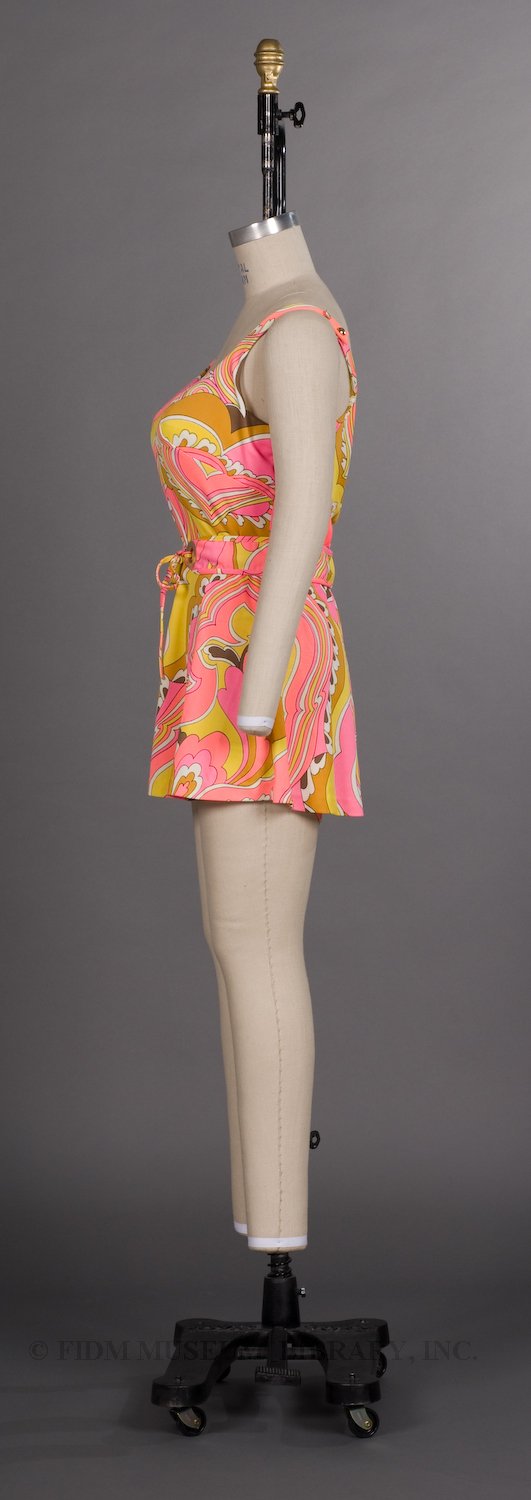
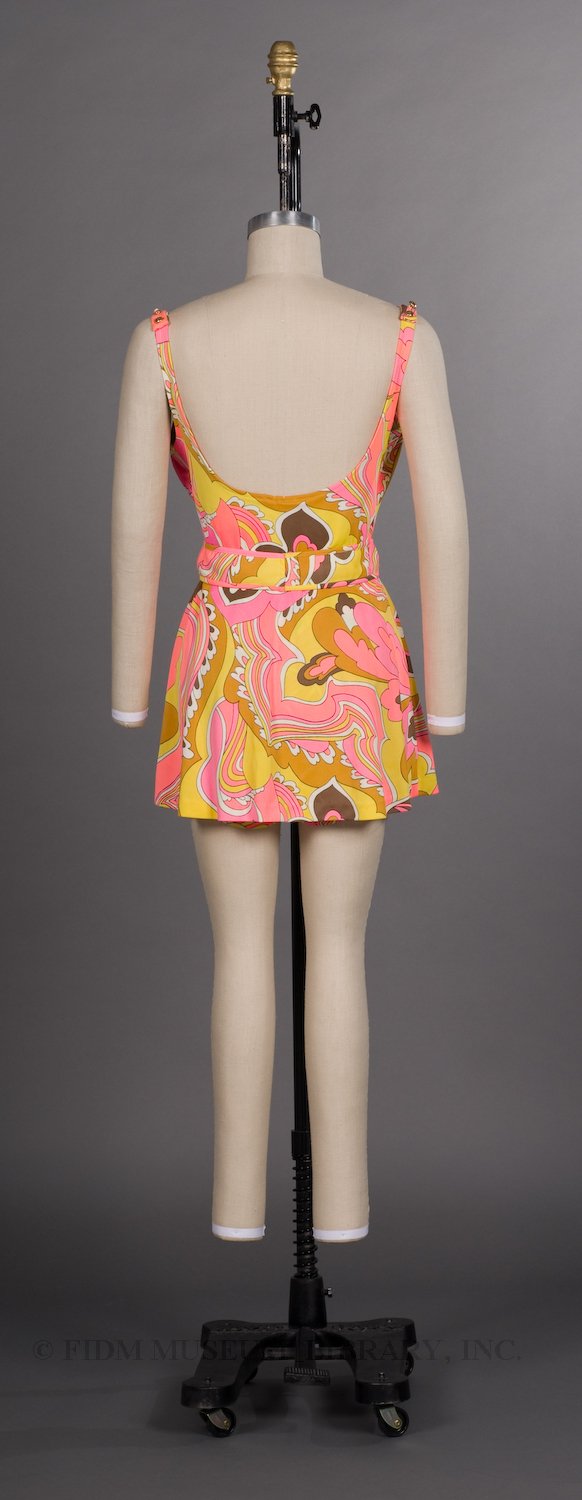
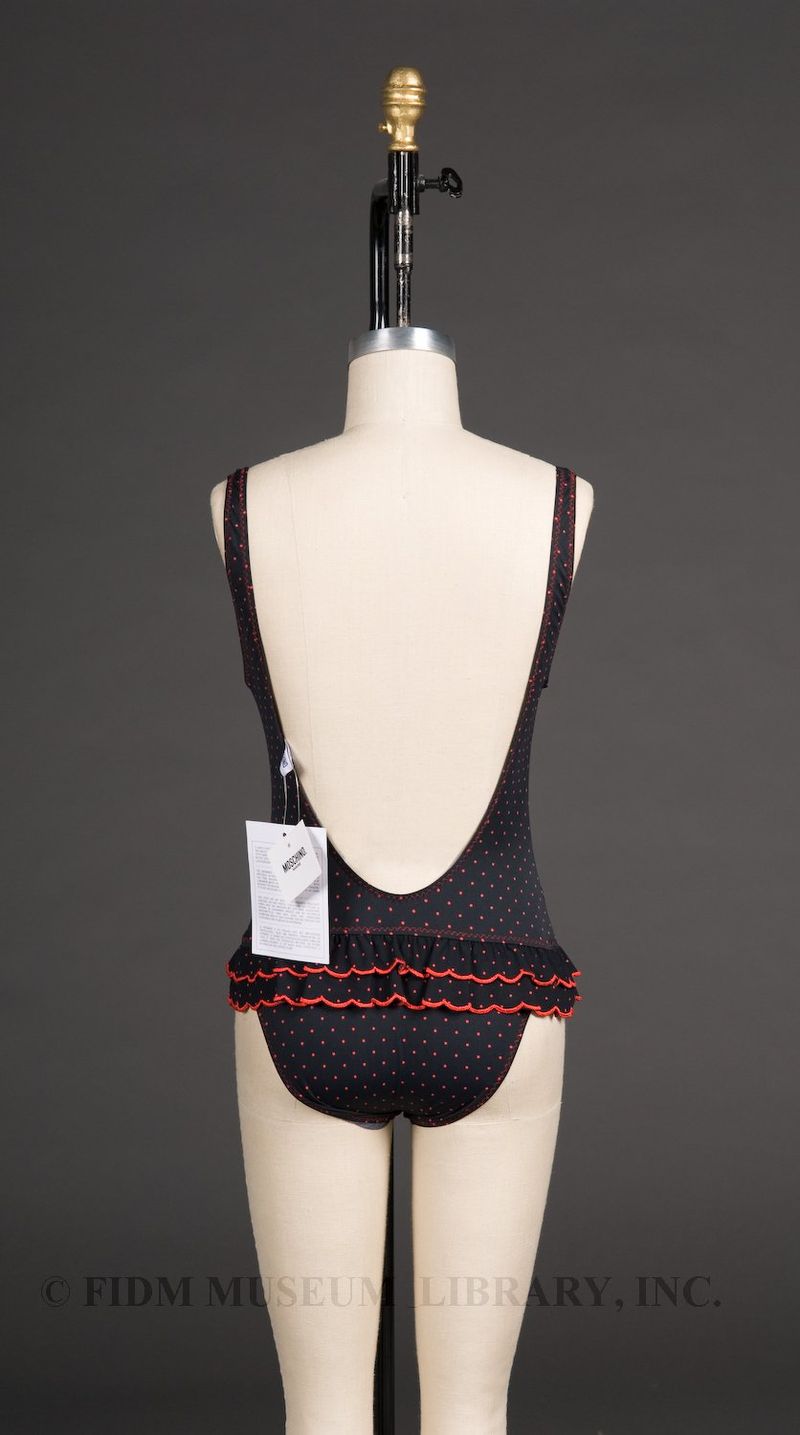
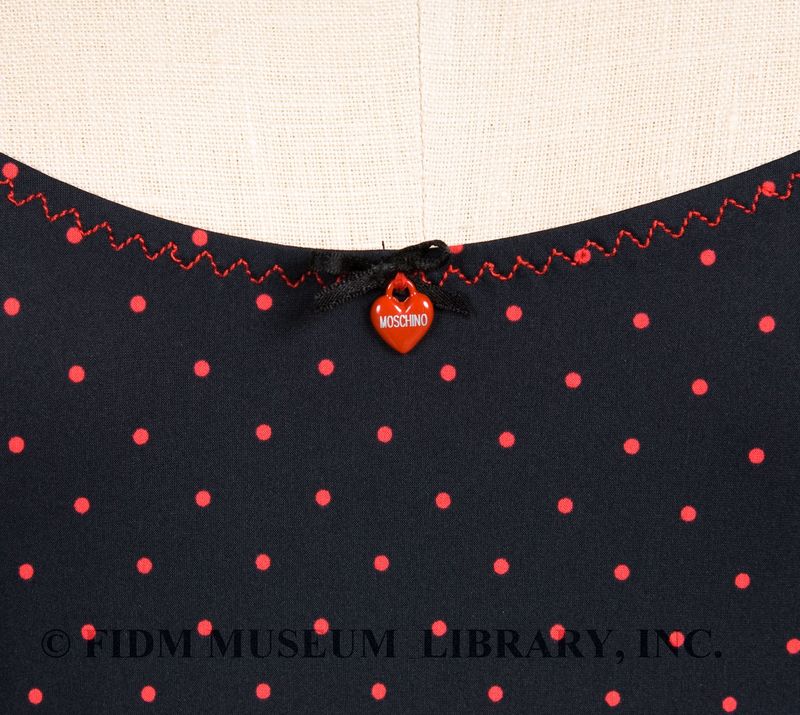

Its crazy to see how swimwear has evolved over the course of time. From pageantry to modeling and movies the way that fashion in general has changed and keeps on changing is crazy.
Side note: today, the Miss USA pageant is probably best known for their swimsuit competition – but I LOVED the pictures that you have shared.
The Victorian bathing costume is horrific, but interesting, as are the comments about trousers. I would point out, though, that the mid nineteen-sixties bathing costume is a bit misleading as a typical example of bathing wear at this time. In fact, at first, I took it for a twenties costume. In the mid sixties (I was 10 in 1965) a lot of women wore bikinis, or, otherwise one piece costumes very similar to the ones worn now – it was generally only fat, shy or elderly women who would have contemplated wearing a skirted costume like this – in an average municipal bathing pool in Birmingham, UK, on a hot summer day, you might have seen one, or two, of these skirted creations. My mother, already in her forties, had a fairly modest bikini. For when bikinis first became fashionable it might help to think back to this, nineteen-fifties hit song. http://www.youtube.com/watch?v=TxMMXuACDDA&feature=related